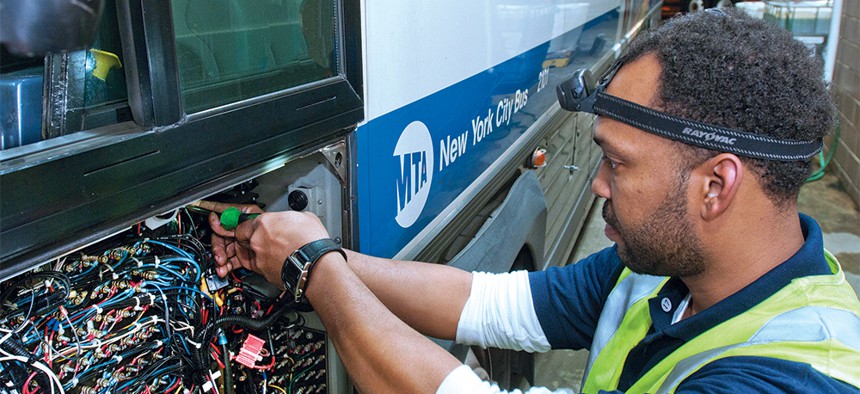Last year, New York’s public sector unions sought to block a state constitutional convention, warning that it would give their enemies the opportunity to erode critical labor protections.
The unions won that fight, but now they’re confronting a more formidable challenge which they have little ability to counter: the U.S. Supreme Court, which is expected to make a ruling in the Janus v. American Federation of State, County and Municipal Employees Council 31 case that would diminish their membership and reduce their clout.
Indeed, Gov. Andrew Cuomo has warned that the ruling could “effectively end public labor unions” – although experts said that claim was somewhat exaggerated.
Of course, it’s not all bad news for public sector unions, which form the backbone of a robust labor movement in New York. Politicians have rallied around unions, standing with them on Janus, supporting workers striking against Charter Communications and joining a push for higher wages for airport workers.
Cuomo has also taken steps to bolster unions, however symbolic, including allowing the deduction of labor dues from state taxes and pushing for a School of Urban and Labor Studies at CUNY in the state budget.
But the Janus ruling will likely force unions to adapt and the impact could reverberate across New York’s political landscape, where unions still play a major role.
In this spotlight on public sector unions, we hear from key government officials and take a look at a new union in New York City that could be a model for how the labor movement strikes back.
New York’s pension funds still invest in guns, tobacco and oil

As a practical matter, divesting from controversial companies or industries is not so simple – even after high-profile incidents, such as the Florida school shooting in February that left 17 dead, increase the political pressure to do so. Read the full story here.
Bob Linn is watching the U.S. Supreme Court
New York City Mayor Bill de Blasio took office with all of the city’s nearly 350,000 unionized municipal workers working under expired labor contracts. By 2017, more than 99 percent were under contract. New York City Director of Labor Relations Bob Linn led that effort, and he’ll be doing it all over again as many of those contracts expire. He talked to City & State about tussling with the police union, negotiating with NYCHA workers and why he’s watching the U.S. Supreme Court. Read the full interview here.
Labor is under threat. A new bus managers union shows how to fight back.
In conversations with veteran labor leaders, what’s clear is that finding fertile ground for getting unorganized employees to take the risk of collectively organizing means thinking out of the box. One newly formed union in New York is the United Transit Leadership Organization, which was just formally recognized in November. Read the full story here.
What the Assembly wants to do for public-sector unions
Many New York elected officials remain strong supporters of public-sector unions, including Assemblyman Peter Abbate Jr., the chairman of hte Assembly Committee on Governmental Employees. In a Q&A with City & State, Abbate weighed in on the Janus case, state legislative efforts to soften the blow, and other priorities in his committee this session. Read the full interview here.
NEXT STORY: Cuomo’s “disingenuous” estimate of NYC's surplus





